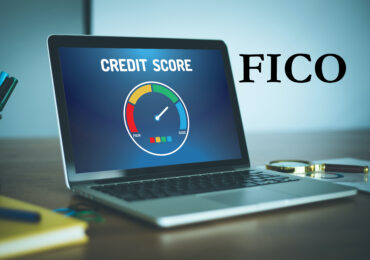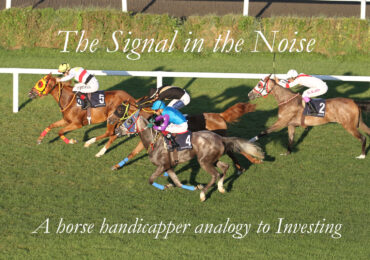The S&P 500 continued the sprint forward speeding ahead over 10% during the fourth quarter. The month of December alone rallied 6.68%, marking the best December performance in nearly 20 years. The total return for the S&P 500 index was 15.06% for the year. Comparatively, the average across our strategies posted a solid absolute return of 10.90% net of fees for the year. We continue to experience “cash drag” which demonstrates our focus on protecting against the downside before looking up, even at the expense of modestly lagging during a strong market rally. We are more concerned about the absolute returns we achieve over a full market cycle while remaining ever vigilant to risk. In other words, we are not as concerned about winning every inning. We want to win the ballgame.
Nothing to Fear but Lack of Fear Itself
The market is enjoying incredible momentum, buoyed by the Federal Reserve’s $600 billion quantitative easing program (“QE2” is the popular Wall Street name), the hopes of less anti-business rhetoric with the Republican victory in the house, and the Bush tax cuts extension. All of these reasons have created expectations for a solid recovery and the belief that the prospects of a double-dip recession are obsolete. The only fear that seems to prevail is fear of missing the bandwagon as the market surges onward.
In the December 13, 2010 Barron’s, Alan Abelson wrote an article titled “Everyone’s Bullish and That’s Bearish.” Time and time again, investor sentiment proves to serve as a contrary indicator at the extremes. He wrote, “According to the latest tally of advisory services by Investors Intelligence, 56.2% were bullish… not that far below the October 2007 high of 62%, just before the market went into its deadly tailspin. It also contrasts strikingly with the prevailing pessimism at the end of August [which was precisely when the rally resumed], when the number of bulls had shrunk to 29.4%.” Warren Buffet has said, “You pay a very high price in the stock market for a cheery consensus.”
Alan also points out that speculative activity has increased with margin debt surpassing $300 billion. In March 2000, margin debt reached $299.9 billion, and one year later markets were down 22.6%. The market later declined again by 22% after surpassing the $300 billion margin debt threshold in December 2006. The last time the margin balance reached these levels was in September 2008, just before the Lehman collapse where the market took a nose dive as a result. There is no doubt in our minds that investors have returned to their speculative behavior. We are not predicting a 22% drop one year from now, but quoting Mark Twain, “History doesn’t [necessarily] repeat itself, but it does rhyme.”
Another signal is the volatility index (VIX), known as the “fear gauge,” which tends to have an inverse relationship to stock prices, has dropped down to low levels not seen since the last time the market pulled back in April. Lastly, short interest, or the number of shares sold short in the market, is at its lowest level this year, signaling more and more investors are joining the chorus that the market will continue to climb. The question “is the glass half full or half empty” has transformed into the belief that the glass is completely flowing over. With this song being sung so intensely in unison, it could just shatter the glass altogether.
One year ago we noted in our year-end letter that when the 2008 forecasts were made, every single Barron’s 2008 forecast predicted an up year ranging from 3% to 18%, when in actuality it turned out to be a negative 37%! This year, there’s a similar feel amongst market forecasters, with most on Wall Street predicting a 10% to 15% return. We are not claiming that this year will be a repeat of failed forecasts, but we will admit it does feel akin to déjà vu.
Recovery at what cost?
Some economic indicators signify a recovery is in the making – but at what cost? What have we done to get us here? The money supply has more than doubled, the Federal funds rate has dropped to near zero, the Federal Reserve’s balance sheet has ballooned by about $1.5 trillion dollars, and national debt has grown nearly $5 trillion with an annual deficit that is continuing to balloon. The Federal Reserve and the government are nearly out of silver bullets, and all the while there are still serious problems looming – problems that not long ago were spooking investors.
Investors are so anxious for positive news that they become euphoric over any perceived improvements yet, disregard anything negative. It is the “heads I win – tails you lose” proposition, where good news exhilarates, and negative news is brushed aside in the belief that the government will continue to lend support. Housing markets remain weak with home prices still sliding, leaving one out of every four homeowners burdened with negative equity. Unemployment and underemployment remain stubbornly high with one out of every six Americans looking for work. State fiscal debt troubles are expanding and budgets will need to be cut, which is the next biggest contributor to GDP behind the consumer. The bottom line, this rally has not been justified on the basis of sound, long-term economic fundamentals.
Many have pointed to the fact that consumer spending seems to have jumpstarted with incredible zeal. We caution against using the holiday period as a guide to extrapolate future spending trends. We reiterate our belief that this increase in consumer sentiment can be attributed to the “wealth effect” – where the rise in stock portfolios induces a false perception of increased wealth. It is the thought that, “The market is up…all must be well and hunky-dory. Let’s enjoy the holiday season and celebrate that the worst is past.” However, if this buying binge were sustainable, it would be accompanied with increasing incomes, which has not been the case. Instead, savings appear to be dropping again, and in fact, as noted earlier, wallets have opened up as people have borrowed against their artificially inflated investment accounts, increasing their margin balances.
What will be the catalyst to shake the markets? Any number of things could trigger a reversal – surging commodity prices, rising interest rates as the U.S. deficit soars higher, more developments in the European sovereign debt crisis (Greece, Ireland, is Portugal next?), to name a few. We do not claim to be clairvoyant, but we do know we can be prepared by sticking to our strategy. At the end of the day, what will impact the value of your portfolio are the specific companies you own.
St. Joe
What began as a timber company has now become the largest real estate development company in Florida. Incorporated in 1936, St. Joe (JOE) owns 577,000 acres of low cost basis land, which is primarily located in Northwest Florida. 70% of that amount is within 15 miles of the coast of the Gulf of Mexico.
In order to extract value from their real estate holdings, the company donated 4,000 acres of land to the Airport Authority to relocate the Panama City Airport and build the Northwest Florida Beaches International Airport. With 300,000 of their acres within 40 miles of the new commercial airport, they are hoping this will be a catalyst to spur economic growth and real estate development. In October 2009, they enticed Southwest Airlines to enter into a strategic alliance with them by agreeing to reimburse any potential losses on its service at the new airport for the first three years.
Last quarter, the stock price dropped significantly as a result of a poor Florida real estate market, fall-out from the BP oil spill, and particularly when a highly detailed and persuasive bearish report was put out by the well-respected investor David Einhorn. Like Einhorn, with all the excess supply and current economic state, we do not see Florida real estate recovering anytime soon. So, if the airport acts as a catalyst to the area, this would only add further upside to our thesis. When analyzing this company, we believe it needs to be viewed purely as an asset play, but with an ongoing expense ratio stemming from overhead. In this case, when doing a sum of the parts analysis, the assets are very difficult to peg at a certain value. However, at some point you can safely say, “It has got to be worth at least this much.” When the negative news hit the headlines, we believe an opportunity was created and JOE began trading far below that amount, even when you account for development costs and taxes that will be incurred as they liquidate their low cost basis holdings. Surprising for a real estate company, JOE essentially owns all their real estate outright, and with net cash of $100MM on the balance sheet, they have ample time to patiently wait for development opportunities to pan out.
Normally, we are not too interested in hard assets that are not generating cash flow. However, in this situation, you could buy already depressed Florida real estate at a significant discount via JOE stock. It is essentially an arbitrage opportunity. It would be like somebody offering me gold at $675 per oz. when it is trading for $1,350 per oz. in the open market. We may not know exactly the proper value of gold, but when we can get it half off the going rate, why not?
Concluding Remarks
We remain very optimistic about the long-term prospects of the companies in our portfolios. Our high quality stocks continue to sell at very low valuations, both from a historical basis, as well as relative to the broad market. This means we believe they will deliver the best future expected returns over a long horizon, while simultaneously providing the best downside protection.
We thank you for your trust and loyalty. We take seriously our fiduciary responsibility to protect your hard earned money. We will strive to continue to provide solid, risk-adjusted returns. Wishing you a happy, healthy, and prosperous 2011!
Sincerely,
The YCG Team
Disclaimer: The specific securities identified and discussed should not be considered a recommendation to purchase or sell any particular security nor were they selected based on profitability. Rather, this commentary is presented solely for the purpose of illustrating YCG’s investment approach. These commentaries contain our views and opinions at the time such commentaries were written and are subject to change thereafter. The securities discussed do not necessarily reflect current recommendations nor do they represent an account’s entire portfolio and in the aggregate may represent only a small percentage of an account’s portfolio holdings. A complete list of all securities recommended for the immediately preceding year is available upon request. These commentaries may include “forward looking statements” which may or may not be accurate in the long-term. It should not be assumed that any of the securities transactions or holdings discussed were or will prove to be profitable. S&P stands for Standard & Poor’s. All S&P data is provided “as is.” In no event, shall S&P, its affiliates or any S&P data provider have any liability of any kind in connection with the S&P data. MSCI stands for Morgan Stanley Capital International. All MSCI data is provided “as is.” In no event, shall MSCI, its affiliates or any MSCI data provider have any liability of any kind in connection with the MSCI data. Past performance is no guarantee of future results.




